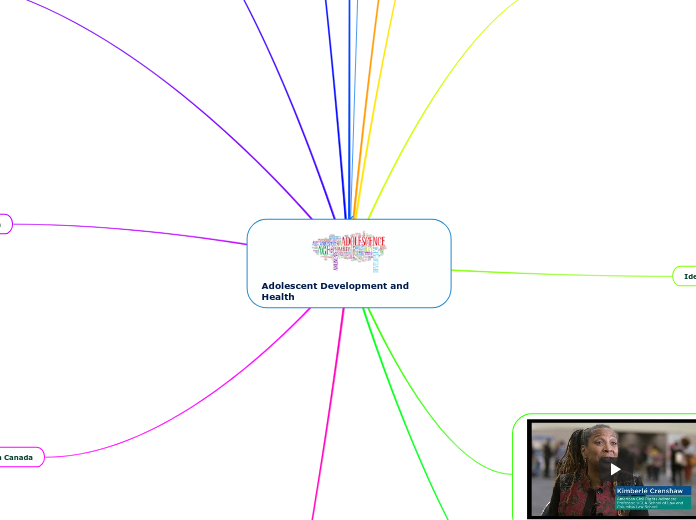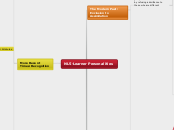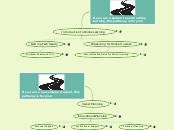Simulated vs. Actual Frogs
Group Discussion: Simulated vs. Actual Frogs
One of the standard activities of high school biology is the frog dissection. This activity has endured for many decades and dissections of this sort are considered to be absolutely central to learning what science is all about. With the advent of computer simulations, teachers now have a choice of doing actual and/or simulated dissections.
In this discussion, you are to consider the pros and cons of simulated frog dissections.
Before starting, you need to try a few simulated frog dissections. Here are three suggestions.
Froguts. Select the frog dissection demonstration and complete it in its entirety (5-10 minutes).
The "Froggy" Project from the Lawrence Berkeley National Lab for an example of an actual virtual dissection. Spend time exploring the "Virtual Frog Dissection Kit" as well as some of the other resources and information. (5-10 minutes)
"Net Frog" from the University of Virginia. This is another virtual dissection website. It requires a fast Internet connection because it has audio and video clips. Also, it is a bit more graphic (dissections by their nature are graphic) and you may not want to explore this site while eating lunch. (15 minutes)
After you have explored the virtual learning expeiences, you may enter the discussion. Please focus the discussion on the following question:
What important aspect of a good science education is gained or lost in doing simulated, rather than an actual, frog dissections?
The purpose of this discussion is to get you to consider more carefully the nature of learning experiences. In particular, we say we prefer "hands-on" or "real" experience, but we are too often quite inarticulate about exactly what it is about these kinds of experiences that makes them compelling. What do we mean by "real" or "hands-on" and why are they important to learning. Hopefully, this discussion will encourage you to become more sophisticated in your understanding of this issue.
Disadvantages of Simulation:
- Forgettable: There is nothing about the simulations that will really grab a students attention like cutting into a real frog would.
- Does not show variation: In doing frog dissections, students get to see that every frog is going to be made a little differently on the inside. You don't get that when everyone is dissecting the same virtual frog.
- Generally easy to blow through: You can not hit next with a real frog and not pay attention and end up with a fully dissected frog. Within simulations, students can turn their brains off, not engage in the activity, and get nothing out of it while still completing any questions that may be asked.
- Graphicness: Anyone can do this. Even the FrogNet simulation was not nearly as bad as having to do it in person. if someone is squemish, they can complete this with zero problems generally.
Disadvantages of Simulated Frog:
-no real life experience
-not as stimulating as the real thing
-potentially forgettable
Disadvantages of simulated dissections:
1) Forgettable- In our on-line age this may register in a student's mind as just another computer game.
You're right Lisen. Soon our students will not know what a pencil or texbook or real frog feels like! So much of their lives are centered around technology w/ non-verbal communication like texts and vending machines for lunch orders. Soon our students are not going to be able to interact with the real environment around them. Sounds like a scary sci-fi movie to me!
Adam French-
conti....
Innaccuarate- doesnt convey the work and focus it takes to actually do something hands.
Disadvantages of Actual Frogs Include:
- Expensive: A bucket of frogs is not cheap. However, there are ways around this. When I taught zoology, instead of dissecting frogs, we dissected fish. Fish that I caught on a nice Saturday afternoon on the river. I get to relax and fish, kids get to learn. That is much harder to do with frogs though...
- Safety: Obviously scalpels and 15 year olds don't always mix. Depending on your class and the students in it, safety can be a concern, however is this really any different than any lab that you are using glass beakers for? Any time your students enter the labratory, safety is a concern.
- Teacher Intensive Activity: When students cut open frogs, nearly every group is going to need help in the process and be asking tons of questions about identifying internal organs. You will be pulled in 30 differnt directions throughout this lab.
- Difficulty in making up the lab: When a student is absent, it is much harder for them to dissect a frog than it is to get on a computer and run through the simulation.
- Students not respecting the activity: Dissecting frogs is not inhumane in nature. What changes this is when students do not respect the frog they are dissecting and start cutting off arms, working their way to the brain, pulling out eyes for fun, etc... The process of dissecting a frog is perfectly ok if you treat it as an educational opportunity.
- Squemish Students: Some students just cannot dissect a frog or even watch it. Don't know why, but some can't.
Disadvantages of Real Frogs:
-inhumane
-expensive
-potentially dangerous for students to use scapels in a room with so many other students
-a lot of prep work involved for teacher
I am not a biology teacher but as a high school teacher with experience with this particular population I see three potential problems:
1) Mess-I imagine the clean-up after a frog dissection is not particularly pleasant.
2) Danger- I also imagine a class of 35 15-17 year olds with scalpels can sometimes led to accidents/injuries.
3) Squeaminess- Finally, I imagine there is a lot of time waste placating squeamishness
Advantages of Real Frogs:
-students get a true sense of organ placement
-are able to feel the texture of the frog and its parts
-develops fine motor skills
-creates a compelling experience that is sure not to be forgotten
I love the idea of true organ placement. We constantly show pictures to students about what cells look like, what different body systems look like, what mitosis/meiosis looks like, etc. Wehn they see a real version of this however, they rarely have any idea what they are looking at (or realize that there is any variation between individuals) because we show them black and white cartoon pictures all the time.
Lisen Hey
(Ok, here I go trying this Mindomo out! Please feel free to change up or correct my arrangement!)
I believe the actual hands-on experience of frog dissection has three main advantages:
1) Focus-Having to actually concentrate on the cutting and pinning forces one to focus in on what she's doing.
2) Novelty-A click of the mouse is a clean, sterile, unattached action -an action most us may do hundreds of times a day. On the other hand how many times in our entire lives do we cut through the skin of a once living animal?
3)Reality- Biology is the study of living things, virtual frogs are not real.
cont...
Tradition - future students anticipate it the experience and get excited for science.
Focus - students become focused when before and during a hands on work. Teachers can use this towards there advantage.
I love the point Adam. This is something that students will anticipate. As science teachers, we constantly hear "I am not good at science" or "I don't like science." Science majors, by percentage, are relatively low throughout the United States. We need to get students excited about science, and dissecting Frogs (or other things for that matter) are an excellent way of getting students really into science.
Advantages of Actual Frogs Include:
- Completely engaging. It is hard not to pay attention when you are dissecting something that was once alive.
- Memorable. The take home message of the dissection will remain with the participants much longer than simulations. Heck, maybe this is what triggers a students to become a doctor or scienctist of some form.
- Scope into medical career. How many students say they want to be a doctor? This provides students with an early point in their lives where a student can become hooked upon the idea of being able to do surgery on people, or the other side of the coin, can tell that cutting things open is just not for them.
- Biology = the study of life. So study something that was once alive. Your computer was not at any point alive. I could show students a picture of a forest or I could walk them through one. This seems to be on the same level of difference in experience to me.
Lisen Hey
There are three main advantages of the simulated dissection:
1) Convenient- All you need are a set of functioning computers. No set up. No clean up.
2) Affordable- I am not a biology teacher so please correct me if I am mistaken, but it seems as if buying a dissection program once would be more cost effective than buying a new batch of frogs every year.
3) Humane-No animals will have to lose their lives in the name of high school science
I'm not trying to start anything, merely playing devil's advocate, but...
If we did not have an entire industry set aside for dissecting frogs in science class, would those frogs have ever been born? I mean, it isn't like there is a group of naturalists out there plummaging through a marsh with nets trying to catch frogs; they "farm" them. So the frogs that are "killed" in the name of science are also "born" in the name of science. And realistically, I would rather them dissect frogs than something like cats, right? It is biology, the study of life. They should study something that was at one point alive...
Adam Frenc
conti....
Repeatable- Students will get opportunity to make a mistake which is hard to fix with hands on work.
Feedback- Student will not have to wait for instructor to get around to answer personel questions.
But doesn't the fact that they can make mistakes and not just be able to hit "back" force most students to focus more on the task at hand? I think it would cause them to take the physical dissection more seriously.
And just because you have a real frog does not mean that they have to wait for approval of questions. If you set up and frame questions in a leading manner, the quesitons will make sense to a student that has paid attention to what they are doing the whole time. It will also guide them through the dissection process, preventing more mistakes.
Adam French
Hey hey hey.... It was painfull for me to find postives for simulations. I was trying to be the hippie teacher and make it ok to FAIL. lol.
I think I may have wrote that feedback wrong. I think instead of feedback I meant asisstance. Labs seem very time consuming with questions especially with middle schoolers. I feel I have to answer question and question independently. This may be my fault with not doing enough lab prep. The students I had last year were lab inexperienced due to the laziness of previous teachers. I had to start form scratch. lol
Two very good points that I didn't think about Adam. But you are absolutely right.
Crystal Phillips
Advantages of Simulated Frogs:
-relatively inexpensive
-no prep work
-safe
-humane
-well designed virtual programs that do not allow students to fly through the experience, their responses to questions determines the pace of the activity
I don't know if I agree with the statement "do not allow students to fly though the experience."
I have disected frogs before probably a dozen times. I have used Frog Guts in class to show students how certain cuts were to be made. At least with Frog Guts, students have to do something. "Froggy" just seemed lame to me and I see a student spending no more than 5 minutes total on the website. I personally spent 5 minutes total on "Frog Net." It is just pictures of the whole process waiting for a student to hit the next button in the bottom right hand corner. There is nothing in any simulation, except Frog Guts, that prevents a student from flying through this Frog Simulation.
Ian Banker
Advantages of Simulation:
- Inexpensive: You can do this 1 time or 1000 times. Either way, it costs nothing more than the price of electricity (assuming you already have computers)
- Ease in Redoing: Students can make up the work at home or if they are absent it is very easy for them to make up the activty on a seperate day. This is much harder with real frogs.
- Safety: There is zero safety issue here unless a student is going to start wrapping the mouse around other students' necks...
- Much less









